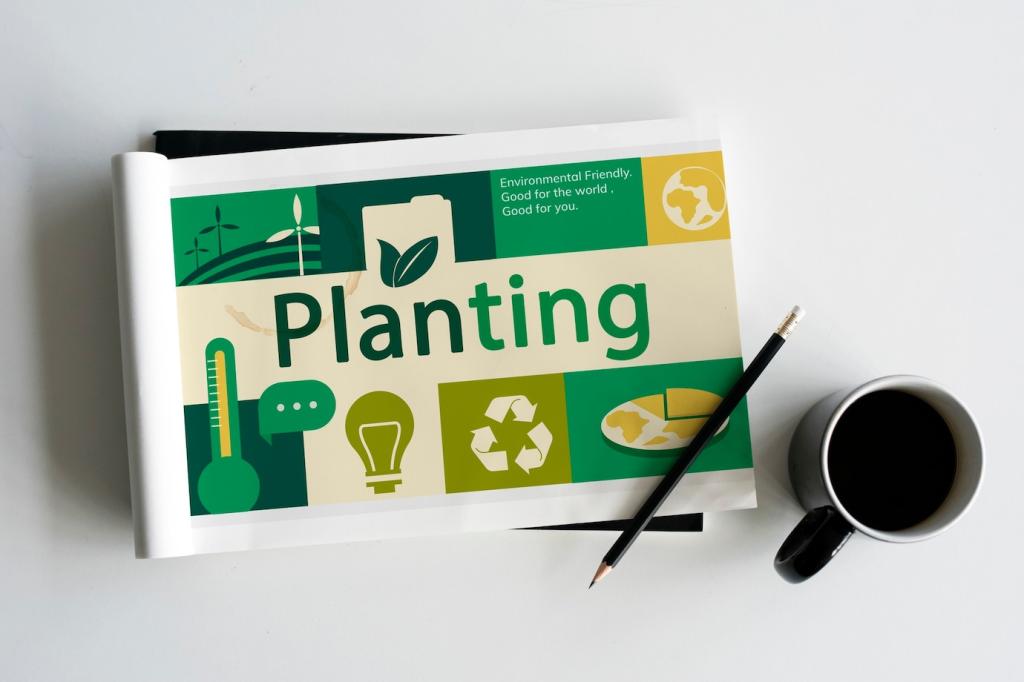
Writing for the Green Consumer: Words that Move People and the Planet
Theme chosen: Writing for the Green Consumer. Welcome to a space where clarity, empathy, and evidence shape messages that eco-minded readers trust. Expect actionable tactics, honest stories, and practical frameworks to help you write content that informs, inspires, and converts without compromise. Subscribe and join the conversation.
Values Before Price
Many eco-conscious shoppers weigh ethics alongside cost, prioritizing durability, repairability, and responsible sourcing. They are not simply bargain hunters; they’re belief-driven buyers seeking alignment between personal values and brand behavior. Speak to that alignment, and trust begins before price enters the frame.
Segments Within Sustainability
The green audience spans frugal minimalists, tech-forward efficiency seekers, ingredient purists, and mission-first families. Each segment responds to different proof points: lifecycle data, certifications, or community impact. Tailor messages by segment, and your relevance rises dramatically with every carefully chosen sentence.
A Quick Story: Maya’s Purchase Journey
Maya needed a raincoat and rejected three stylish options lacking transparency. She chose a brand that disclosed recycled content, repair services, and factory standards, plus a clear care guide. Your writing can mirror that journey—reducing uncertainty with honest detail that makes the decision feel responsible.
Voice, Tone, and Framing that Build Trust
Authentic, Unpolished Clarity
Favor straightforward verbs over lofty slogans. Swap buzzwords for examples, processes, and timelines. If you don’t know something, say so and explain what you’re doing to learn. A humble, conversational voice signals you care more about accuracy than applause, and readers notice.
Benefits Before Features
Lead with outcomes that matter: longer product life, fewer replacements, safer ingredients, simpler maintenance. Features are supporting actors. Translate specs into life moments—“keeps your child’s room quieter,” “reduces laundry loads,” “stays comfortable after years of wear”—so benefits become vivid and personal.
Empathy Over Ego
Acknowledge trade-offs, budget constraints, and skepticism. Avoid shaming language; celebrate small steps. Invite readers to make progress at their pace and offer choices that meet different thresholds. When your writing respects real life, your brand becomes a partner instead of a judge.
Storytelling with Data, Not Hype
From Footprint to Narrative
Explain how a product’s carbon footprint or water use was calculated, then connect it to daily habits. “One jacket saved enough water to fill six bathtubs” paints a picture. Numbers matter, but meaning sticks when readers can visualize impact clearly.

Avoiding Greenwashing—Write with Integrity
Plain-English Claims
Ditch words like “eco-friendly” without proof. Be specific: “Packaging is 95% recycled cardboard; tape is paper-based; printing uses soy inks.” Tell readers where improvements are pending. Specificity beats slogans, and it prevents unintentional overreach.
Third-Party Validation
When relevant, cite certifications such as FSC, Fair Trade, ENERGY STAR, or USDA Organic. Clarify the scope—product, process, or facility—and link to accessible documentation. Third-party verification strengthens your narrative without sounding defensive.
Owning Trade-Offs Publicly
If recycled content reduces durability, explain how you mitigate it with repair or take-back programs. If supply constraints limit scale, share timelines. Owning trade-offs invites partnership with readers who value transparency over tidy perfection.
Formats that Inspire Action
Lead with value, then detail materials, certifications, and care instructions. Add lifecycle benefits and repair options. Use concise comparison tables to reduce decision friction. Close with a context-aware call to action—buy, save, or learn more—without forcing urgency.
Formats that Inspire Action
Design a gentle arc: welcome, educate, compare, invite. Mix stories, how-tos, and behind-the-scenes content. Include small, low-commitment asks like responding with a question or sharing a repair tip. Engagement deepens when readers feel included, not chased.


Sustainable SEO and Discoverability
Map informational, comparative, and transactional intents: “how to repair denim,” “bamboo vs cotton sheets,” “reusable bottle best price.” Align format and depth to the intent so readers feel you anticipated their needs thoughtfully.

Sustainable SEO and Discoverability
Group semantically related phrases—materials, certifications, care, disposal—and build pillar pages with interlinked guides. Avoid stuffing. Write for humans first, then refine headings and structure so search engines can follow your logic naturally.
Community, Feedback, and Ongoing Learning
Ask readers to share repair wins, product swaps, and everyday hacks that made sustainability easier. Feature their stories with credit. Community knowledge makes your content richer and more practical than any single expert voice.

